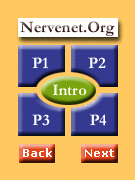




 |
 |
 |
 |
 |
|
|

|
|
||
|
RESEARCH PLAN |
|||
|
Principal Investigator/Program Director Williams, Robert W. |
|||
|
Stereology and Neuroscience: An Efficient Method for Acquiring Quantitative Data Unbiased techniques to study cell populations and to estimate volumes from cross-sectional areas have been available for many years. But the introduction of highly efficient methods to count and measure cells in thick and thin sections, particularly direct three-dimensional counting and several adaptations of the disector, has made it easier to obtain accurate sets of neuroanatomical data. As a practical matter, however, the most important advance in quantitative techniques has been the rapid hybridization of microscopes, video systems, fast microcomputers, and powerful application programs such as NIH Image, Stereologer, and NeuroZoom. Investigators can now use more trustworthy quantitative techniques to study large numbers of cases. These technical advances make it possible to undertake a QTL analysis of CNS structure. Studies that previously would have taken months or years can now be done in weeks or months. The growth of stereology as a tool for neuroscientists is perhaps best illustrated by an examination of the frequency of published papers employing stereological techniques. In the past 20 years, more than 2000 published papers have relied on stereology and most of these were published within the last decade. Of these, approximately 600 have been in neuroscience-related fields. It is clear, therefore, that the use of stereology in neuroscience has gained momentum in recent years as a method for accurate and efficient quantification of neuroanatomical traits. Using stereological principles, mapping QTLs for these neuroanatomical traits becomes quite feasible.
|
|||
|
NEXT TOPIC |
|||